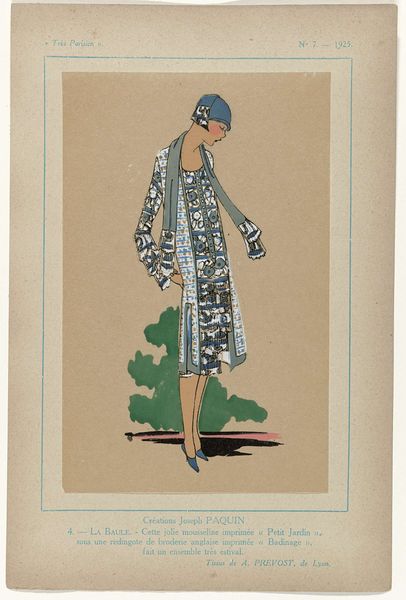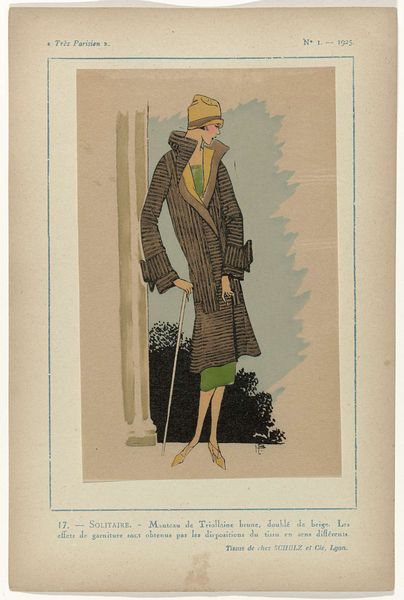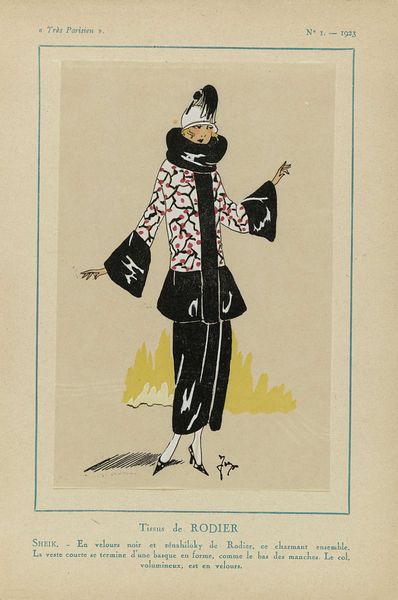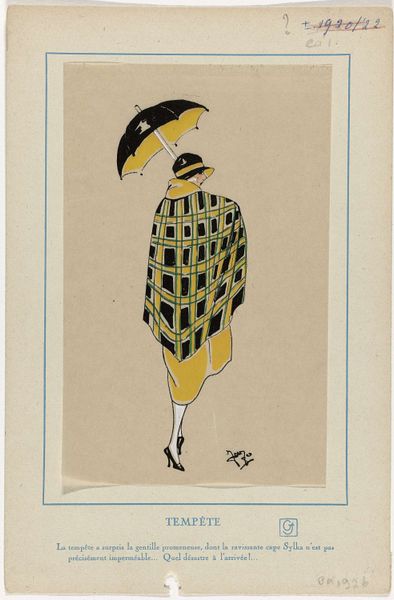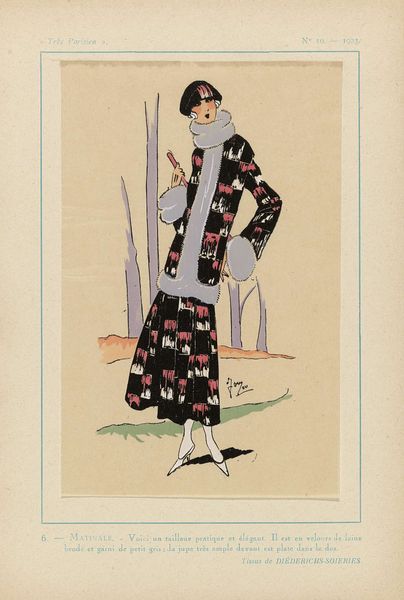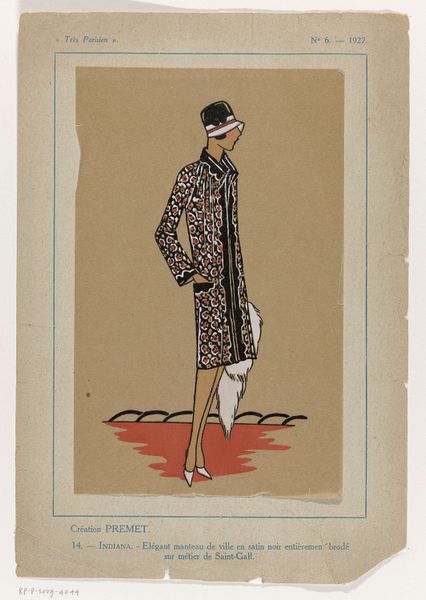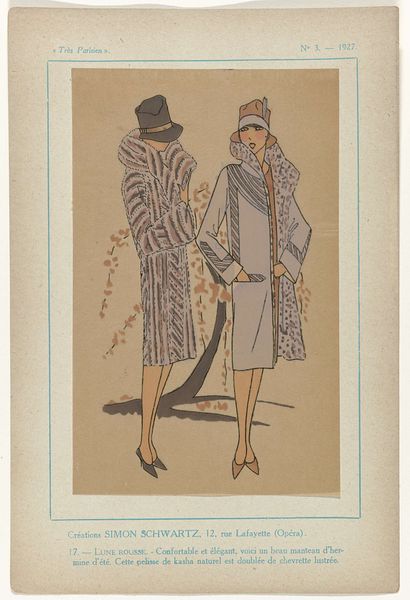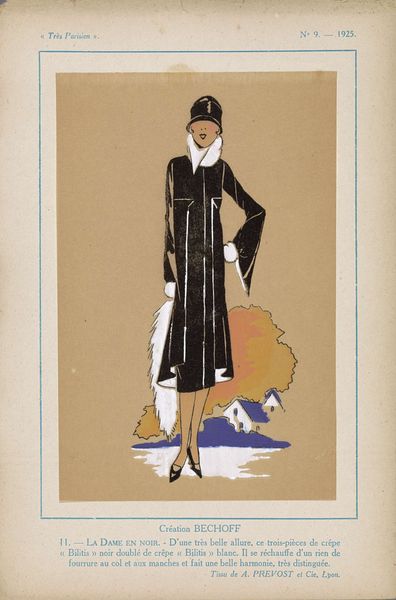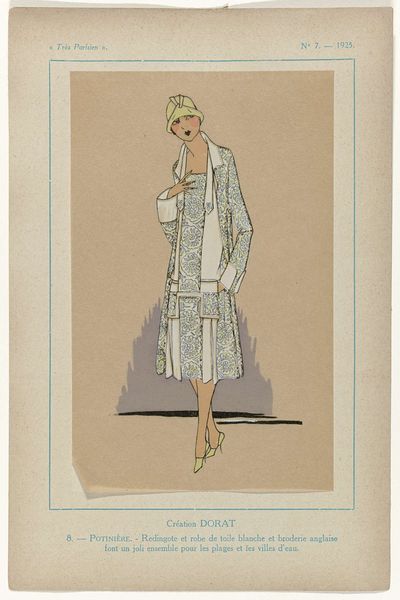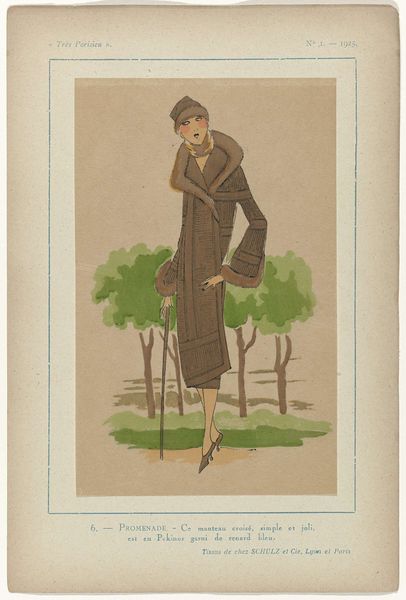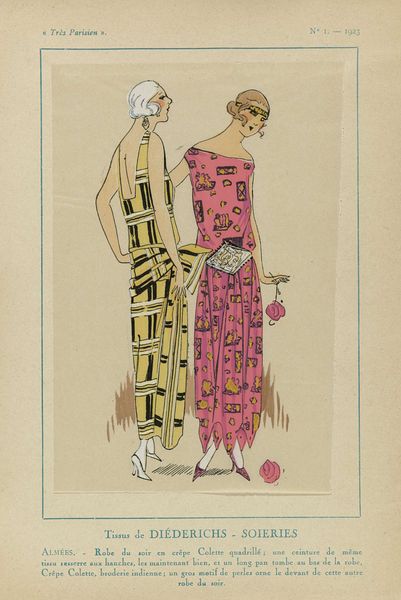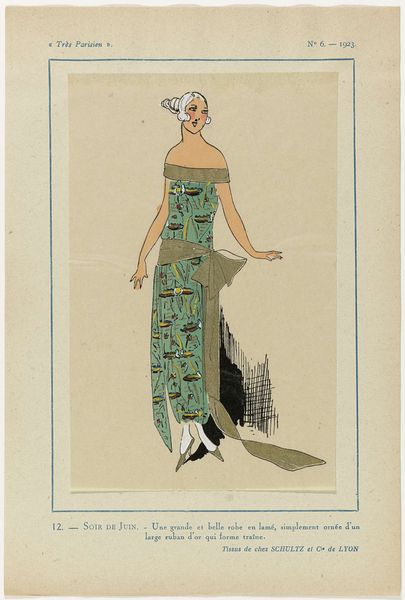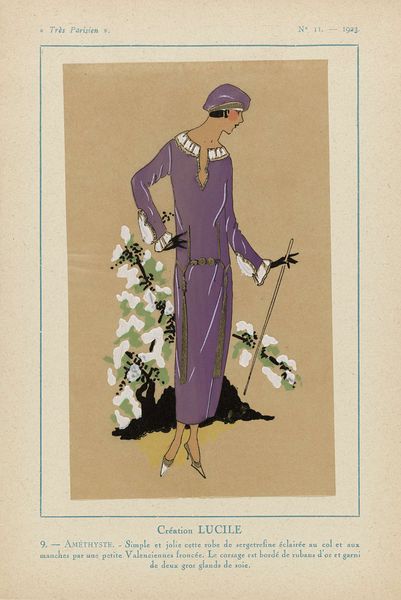
drawing, ink
#
portrait
#
art-deco
#
drawing
#
blue ink drawing
#
caricature
#
caricature
#
ink
#
watercolour illustration
#
decorative-art
Dimensions: height 195 mm, width 120 mm, mm
Copyright: Rijks Museum: Open Domain
Editor: So, this is "Très Parisien, 1925, No. 10, Pl. 15. - VEUVE JOYEUSE" by G-P. Joumard, made in 1925, Rijksmuseum. It’s a drawing, mostly ink. It looks like a fashion plate, and there’s this feeling of decadent elegance. What stands out to you? Curator: Immediately, I’m drawn to the title: “The Merry Widow.” This image becomes so much more than a depiction of stylish clothing. What does the diamond pattern evoke for you? Is there a sense of confinement or containment versus the liberation suggested by “merry?" Editor: I see what you mean, the title hints at something more complex. The diamonds, now that you mention it, could feel trapping, like a cage of societal expectations, especially after a loss. Curator: Exactly. The Art Deco style, popular at the time, embraced geometric patterns and luxury, often masking deeper emotional complexities. Do you think the white fur trim amplifies the sense of "merry," or could it suggest mourning, given white’s historical associations with death in some cultures? Editor: Hmm, I hadn’t considered the fur as a symbol beyond just luxury. The whiteness does add another layer; it's not quite joyful, is it? Perhaps it’s more of a performance of joy? Curator: Precisely. The cultural memory associated with color, texture, and form profoundly impacts how we read this seemingly straightforward fashion illustration. We’re dealing with potent symbols that create narrative friction. Editor: It’s amazing how much is communicated beyond just the surface-level image. I’ll definitely think differently about Art Deco from now on. Curator: Indeed. Symbols resonate across time. What appears as mere style can reveal deeper emotional and cultural truths.
Comments
No comments
Be the first to comment and join the conversation on the ultimate creative platform.
